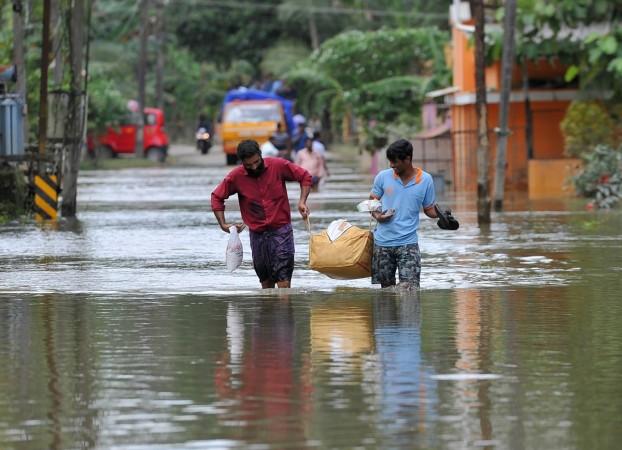
Two days after Chief Minister Pinarayi Vijayan announced a Cabinet decision to regularize illegal constructions in the high ranges of Idukki district, torrential rains hit Kerala triggering massive landslides all across the Western Ghats.
Dozens of lives lost and property destroyed underline the fallacy of the logic behind the decision that would further endanger the ecologically fragile hills of this narrow sliver of land hugging the southern coast of India.
The tea town of Munnar at an altitude upwards of 1,500 metres and the cardamom plantations of Peermede and Kumily that have been ravaged by encroachments are part of this district.
The decision, taken under apparent pressure from political elements cutting across party lines, particularly Electricity Minister MM Mani's supporters in Idukki district, has the possibility of being extended across the state. Experts think that would lead to further destruction of the environment along the hills that have been battered by unbridled construction and mining.
In the past few days, heavy rains and landslides have claimed more than 50 lives and several dozen are missing in Kerala. The hills have been hit by more than 80 big and small landslides, mostly in the steep areas in the high ranges.
The authorities have been forced to open the shutters of several dams in the hills, flooding the plains. Among the worst-hit district are Kannur, Wayanad, Malappuram, Ernakulam, Idukki and Thiruvananthapuram. An entire valley of Kavalappara in Wayanad district has been swept over by earth sliding from the upper reaches burying underneath it about 17 houses along with nearly 40 people.
Kochi's Nedumbassery Airport has been closed for operations until Sunday because of the flooding on the runways. The state government has opened more than 1,000 flood relief camps and more than 2 lakh people from the flood-prone areas have been moved there.
As in the case of such natural disasters engulfing wide areas, the magnitude of the loss would be known only after the floods recede and people return home.

Around this time of the year in 2018, Kerala was hit by a similar disaster of much greater magnitude when rains of unprecedented intensity whipped the state. About 500 people were reported dead and 140 missing, with the state government estimating total losses worth Rs 40,000 crore. The disaster was compared with the flooding of 1924 which changed the geography of many areas in Kerala permanently.
The state is reeling under floods and landslides again in the successive year. This has prompted a look at the vast destruction of the environment in the state's fragile hills. Both the Marxist Communist Party (CPM)-led Left Democratic Front (LDF) and the opposition Congress-led United Democratic Front (UDF) have been bending the rules to benefit the encroachers. This nexus with land sharks is allegedly driving the politicians of the state to oppose even sensible legislation to protect the environment.
Experts point out that the Western Ghats in the southern reaches are steep and unstable. Alterations like the wanton removal of the green cover and construction in steep hill slopes can trigger massive landslides. All political parties blindly opposed the Madhav Gadgil committee report for protecting the ecologically fragile areas in order to safeguard the interests of different lobbies. They are now opposing even the watered-down Kasturi Rangan report.
The decision to regularise illegal constructions in the already crowded areas rules out the possibility of restoring the ecological balance. According to The Hindu, the Cabinet has tasked the Idukki district collector to prepare a report on the encroachments in the region and regularise buildings having an area up to 1,500 sq ft located on titled land up to 15 cents and are being used for own purposes.
The government has proposed the Land Assignment Rules, 1964, to regularise the buildings. Constructions on encroached government land would be taken over and used for public purposes, instead of demolishing them and allowing nature to repair itself. The decision will not help the environment in any way, according to experts.

















